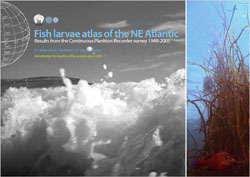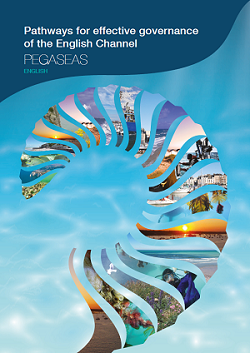Research Publications

Fish larvae atlas of the NE Atlantic
Fish larvae atlas of the NE Atlantic - Results from the Continuous Plankton Recorder survey 1948-2005
Summary:
The fish larvae project was an ambitious study to identify the fish larvae found on CPR samples and transfer the results to a database incorporating the data from an earlier CPR Fish Atlas (1980, Bull. mar. Ecol., 8). This required re-analysing over 10,000 archived CPR samples and recording over 32,000 identified specimens. The project has resulted in the creation of a unique fish larvae database of the NE Atlantic, North Sea and adjacent areas from 1948-2005.
Due to the size of the fish larvae and the sampling method, they can often be damaged and identification to species level is not always possible using traditional microscopic methods (the method used in this project). However, advances in molecular analysis of CPR archived material now allow molecular identification of fish larvae. In terms of diversity, the CPR fish larvae database consists of 75 taxonomic groups or species, of which this atlas contains the distributions and time-series for the 7 most common taxa (excluding Sebastes spp. from the central and western North Atlantic) with an additional 2 included of particular current interest.

Pathways for effective governance of the English Channel
This report is aimed at policy makers working in the marine and coastal environment. It contains a breadth of issues from conservation and biodiversity, to marine planning and shipping, relating specifically to the Channel area. Cross Channel themes are synthesised for communication to a political audience (local, national and European), linking INTERREG science to specific policy instruments.
Published as part of the INTERREG IVa programme, and launched at the House of Commons in 2014.

